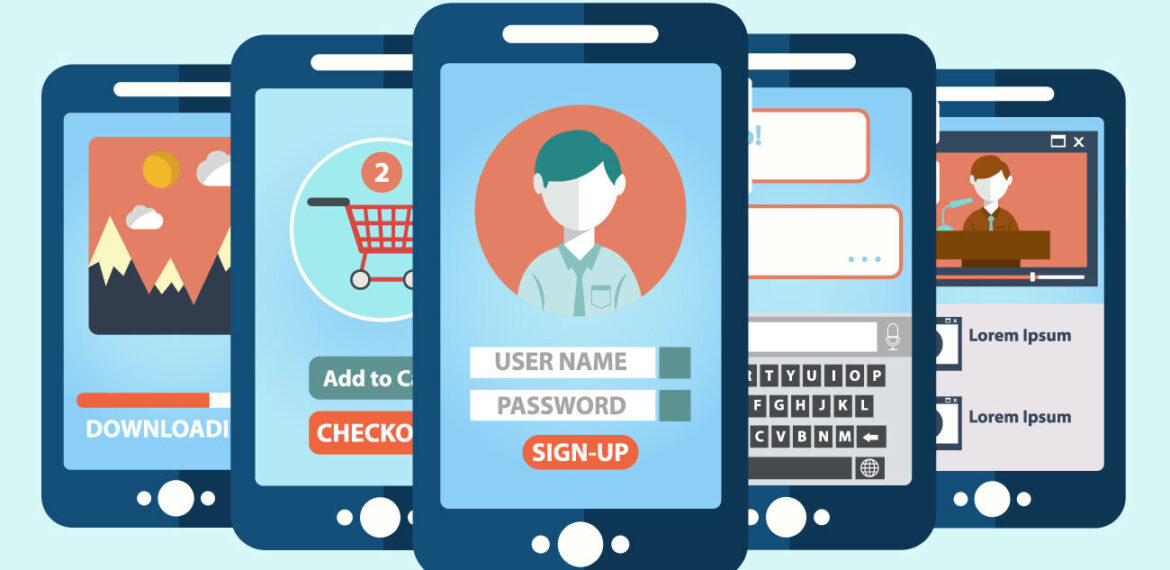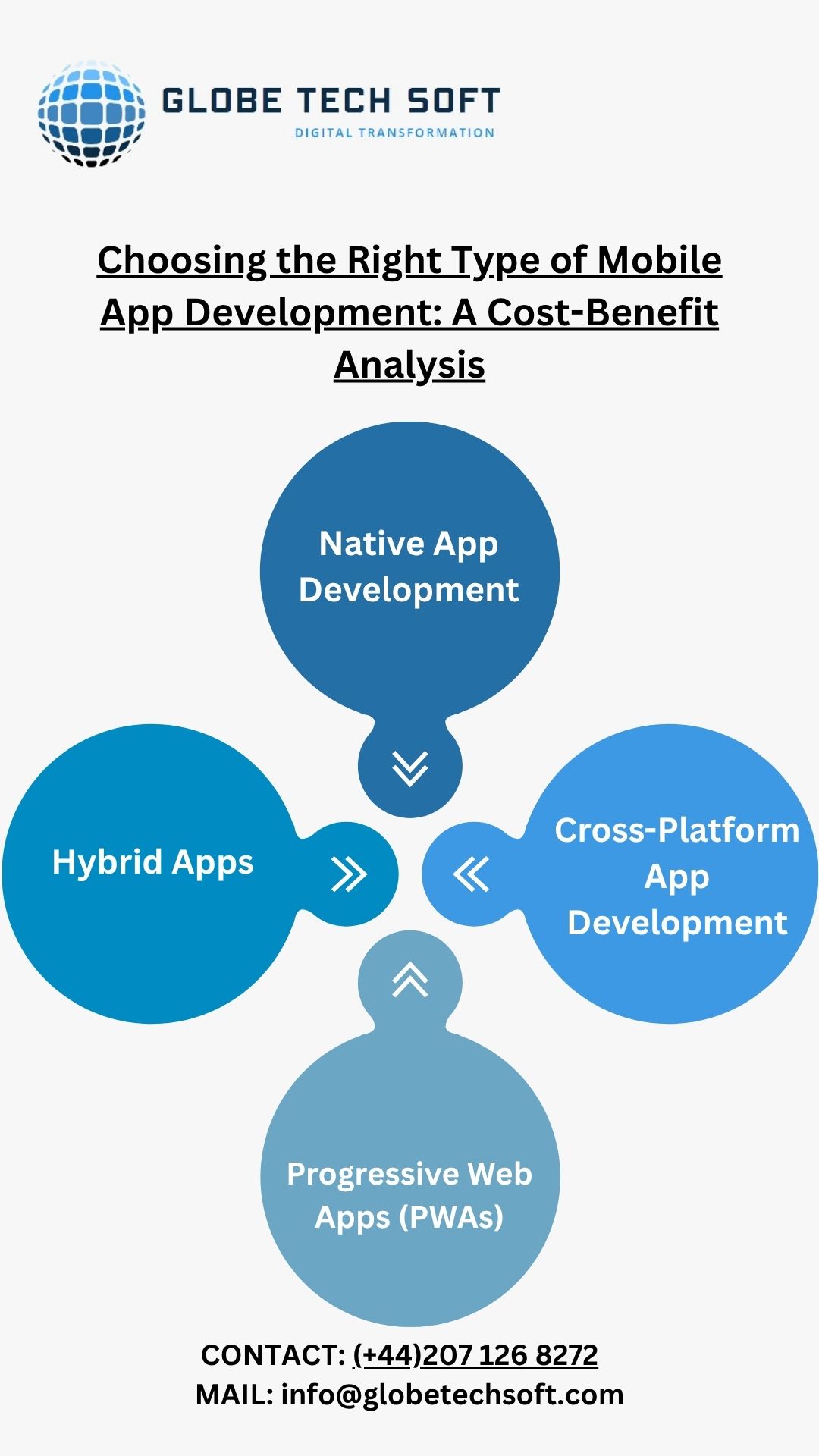
Choosing the Right Type of Mobile App Development: A Cost-Benefit Analysis
Choosing the Right Type of Mobile App Development: A Cost-Benefit Analysis
In today’s mobile-first world, a compelling app can be the lifeblood of a business, a game-changer for a startup, or a powerful tool for community building. But before you dive headfirst into development, a critical decision awaits: choosing the right type of mobile app. This isn’t just a technical choice; it’s a strategic one with significant cost and benefit implications.
Let’s break down the most common mobile app development approaches, offering a cost-benefit analysis to help you make an informed decision.
1. Native App Development
What it is: Native apps are built specifically for a particular operating system (iOS or Android) using their respective programming languages (Swift/Objective-C for iOS, Kotlin/Java for Android) and development tools.
Benefits:
- Optimal Performance: Native apps deliver the best performance, speed, and responsiveness, fully leveraging the device’s capabilities.
- Superior User Experience (UX): They adhere perfectly to platform-specific UI/UX guidelines, providing a seamless and intuitive experience that feels “at home” on the device.
- Full Hardware Access: Immediate and robust access to all device features, including GPS, camera, microphone, NFC, and gyroscopes.
- Enhanced Security: Generally considered more secure due to platform-specific security features.
- Offline Capabilities: Often have better offline functionality.
Costs:
- Higher Development Costs: You’ll typically need to develop two separate codebases (one for iOS, one for Android), doubling development time and resources.
- Longer Development Time: As a direct consequence of separate codebases.
- Higher Maintenance Costs: Updates and bug fixes need to be implemented and tested for each platform independently.
- Specialized Skillset: Requires developers proficient in specific native languages.
Best For: Apps where performance, complex functionalities, a highly polished user experience, and full hardware integration are paramount (e.g., high-performance games, sophisticated photo/video editing apps, augmented reality applications).

2. Cross-Platform App Development
What it is: Cross-platform development involves writing a single codebase that can be deployed on multiple operating systems (iOS and Android). Popular frameworks include React Native, Flutter, and Xamarin.
Benefits:
- Cost-Effective: Significantly reduces development costs as you’re building one app for two platforms.
- Faster Development: “Write once, run anywhere” leads to quicker time-to-market.
- Easier Maintenance: Updates and bug fixes can be applied to a single codebase, streamlining the maintenance process.
- Wider Audience Reach: Simultaneously targets both iOS and Android users.
- Shared Codebase: Promotes consistency in features and design across platforms.
Costs:
- Potential Performance Compromises: While frameworks are improving, performance might not always match that of a native app, especially for highly demanding applications.
- Limited Hardware Access: May have some limitations or require workarounds to access certain niche native device features.
- Dependency on Framework Updates: Reliance on the framework’s stability and ongoing development.
- “Native Feel” Discrepancies: While close, achieving a truly 100% native look and feel can sometimes be challenging.
Best For: Apps that need to reach a broad audience quickly and cost-effectively, with moderate performance requirements and standard feature sets (e.g., social media apps, e-commerce platforms, productivity tools, content delivery apps).
3. Progressive Web Apps (PWAs)
What it is: PWAs are essentially websites that look and feel like native mobile apps. They are built using web technologies (HTML, CSS, JavaScript) and leverage modern browser capabilities to offer app-like experiences, including offline access, push notifications, and home screen installation.
Benefits:
- Extremely Cost-Effective: Essentially a sophisticated website, development costs are significantly lower than native or even cross-platform apps.
- Instant Accessibility: No app store download required; users just visit a URL.
- Platform Agnostic: Works across all devices and operating systems that have a modern web browser.
- No Installation Barrier: Reduces friction for users, leading to higher conversion rates.
- SEO Discoverability: Being web-based, PWAs are discoverable by search engines.
- Automatic Updates: Users always have the latest version without manual updates.
Costs:
- Limited Hardware Access: The most restrictive in terms of accessing device hardware features.
- Less “Native” Feel: While improving, they still operate within a browser environment and may not always provide the same level of seamless integration as native apps.
- No App Store Presence (Directly): While they can be listed in some app stores, their primary distribution isn’t through them, which can impact discoverability for some user segments.
- Performance Dependent on Browser: Performance can be affected by the user’s browser and internet connection.
Best For: Content-heavy websites, e-commerce stores, blogs, and services that prioritize broad accessibility, low development costs, and instant user engagement (e.g., news portals, online shopping experiences, lightweight utility tools).
4. Hybrid Apps
What it is: Hybrid apps are a blend of native and web technologies. They are essentially web applications encased in a native shell (WebView). Frameworks like Apache Cordova (PhoneGap) and Ionic are commonly used.
Benefits:
- Moderate Development Costs: Cheaper than native, but potentially slightly more involved than PWAs due to the native wrapper.
- Faster Development: Leverages web development skills.
- App Store Distribution: Can be published to app stores, providing an official presence.
- Offline Capabilities: Can have some offline functionality.
Costs:
- Performance Can Be an Issue: Heavily reliant on the WebView, performance can be sluggish compared to native apps, especially for complex animations or demanding tasks.
- Limited Native Feature Access: Access to native features is often through plugins, which can be less reliable or up-to-date than native APIs.
- UX Consistency Challenges: Can be difficult to maintain a consistent native-like UX across different platforms.
- Debugging Complexities: Debugging can be more challenging due to the layers of technology.
Best For: Simple apps that need an app store presence but have limited budgets and require basic functionality, or for extending existing web applications to mobile (e.g., internal enterprise apps, simple content display apps).
Conclusion:
In conclusion, the decision of which mobile app development approach to take isn’t a one-size-fits-all answer. It’s a strategic alignment of your app’s purpose, your budget, your timeline, and your performance expectations. Whether you opt for the robust power of native development, the efficient reach of cross-platform, the immediate accessibility of a PWA, or the balanced approach of a hybrid app, each path offers distinct advantages and trade-offs.
By thoroughly understanding the cost-benefit analysis presented here, you’re now equipped to make an informed choice that will not only bring your app idea to life but also ensure its long-term success in the dynamic mobile landscape. What specific features are you hoping to prioritize in your app, and how do you envision your users interacting with it?


